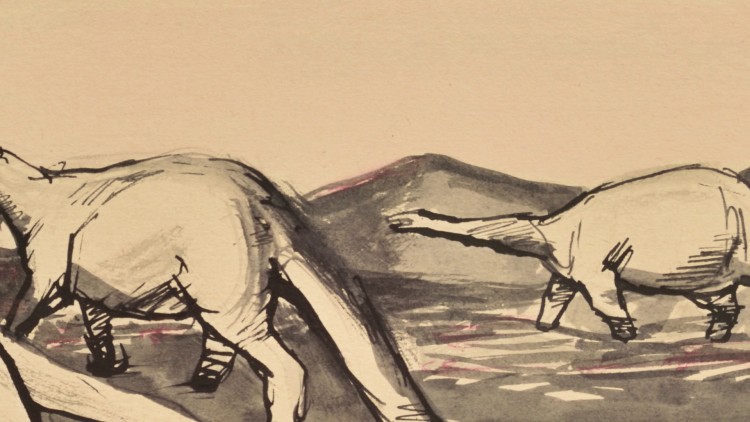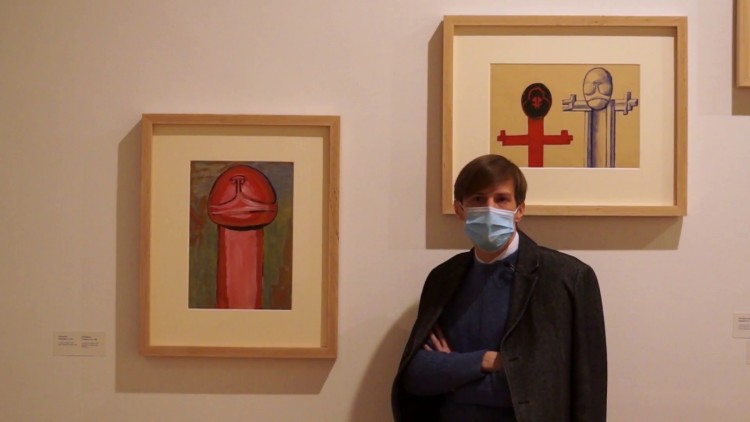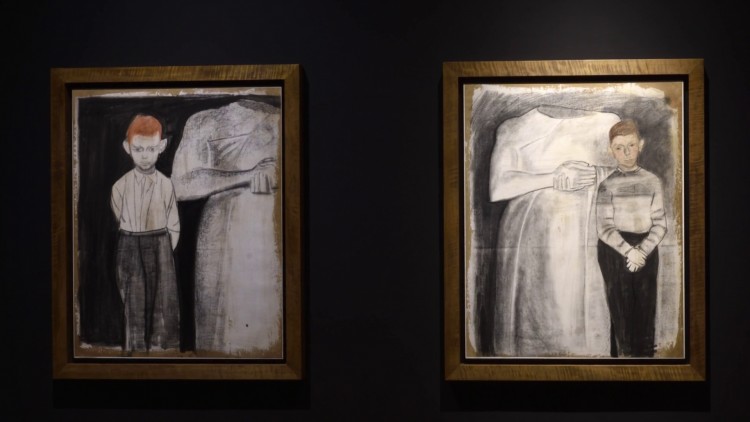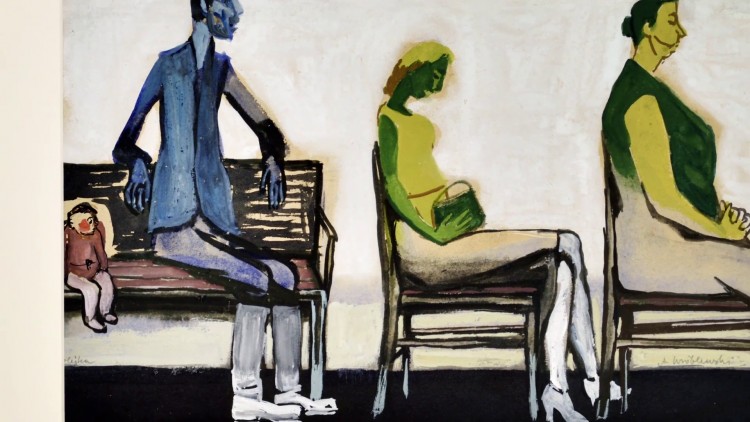This is the first international exhibition of Wróblewski's work that is dedicated solely to his travels across Yugoslavia and his late work. It showcases more than 120 of his works from the period between 1955 and 1957. The curators decided to choose as the milestones the birth of Wróblewski's son on 10 May 1954, and the artist’s premature death on 23 March 1957. Most of the selected works have never been exhibited before, and some were last publicly shown in 1958. Included in the exhibition are such famous works as the Waiting Room I, The Queue Continues; Waiting Room II, (Chairing I); and Tombstone, (Tombstone of a Womanizer), together with numerous gouaches, monotypes, and a few dozen large-format works on brown packaging paper.
The concept of the exhibition has several points of departure: first and foremost there are figures that seem bound to their chairs, even turning into them as in some sort of anticipation, reflection and timelessness; they appear somehow “decomposed,” anonymous and de-individualized. This “waiting-room mentality,” as Heiner Müller described it in the documenta IX catalogue, can be seen as typical of the onetime socialist Central and Eastern Europe experience. Even if everyday life in former socialist Yugoslavia differed considerably from the social and artistic circumstances in Poland and other countries behind the Iron Curtain at the time, the waiting-room point of view enables the connection with the universal which touches upon ethical, moral and bodily existence, but also affective labor and the work of mourning. In this respect, the exhibition brings the topos of waiting in Wróblewski's work (including the draft of a screenplay for a short film called Waiting Room) in dialogue with a selection of waiting rooms from a 1950s series by the Slovene painter Marjan Dovjak (1928–1971). Together with a small selection of Slovene and ex-Yugoslav artists, the exhibition establishes a link with Moderna galerija's permanent exhibition of 20th century art. How did Wróblewski and Majewska see the work of Slovene artists such as Gabrijel Stupica, Marij Pregelj, Riko Debenjak, Stane Kregar, and Marko Šuštaršič? Moreover, the topic of waiting is also the initial viewpoint through which Moderna galerija intends to research Slovene and Yugoslav art of the 1950s, especially abstract art between 1948 and 1963 (an international exhibition is planned for 2022).
Wróblewski’s exhibition is structured around six themes. The first is a reconstruction of Andrzej Wróblewski and Barbara Majewska’s travels in Yugoslavia between 30 October and 21 November 1956. The exhibition thus includes numerous archival materials and photographs in addition to artworks that were directly inspired by Yugoslav art as well as Yugoslavia’s landscapes, folklore, architecture, and stećci. The second theme is Wróblewski’s everyday life and the notion of parenthood, especially motherhood. Numerous portraits of his wife, nudes, interiors of his apartment and studio in Krakow are in dialogue with famous depiction Mothers, Anti-Fascists that the artist exhibited at the Exhibition of Young Art under the slogan “Against War – Against Fascism”. The subsequent and central theme is waiting: an incredible inventory of waiting rooms, queues, and metamorphoses of figures into chairs. Wróblewski exhibited these works at the 3rd exhibition of the Salon Po Prostu at the Jewish Theater in Warsaw in August 1956. In our exhibition they are shown together with different images of female figures and portraits of a young model. A special room is dedicated to the motif of a boy, which is especially important in Wróblewski’s final period. The concluding theme of the exhibition brings together 33 (out of 35) surviving monotypes. Wróblewski made 81 of them, in all probability during the final weeks of his life. Given that these monotypes refer to all the important themes that preoccupied the artist throughout his career, we can take them to be his “artistic testament”.





